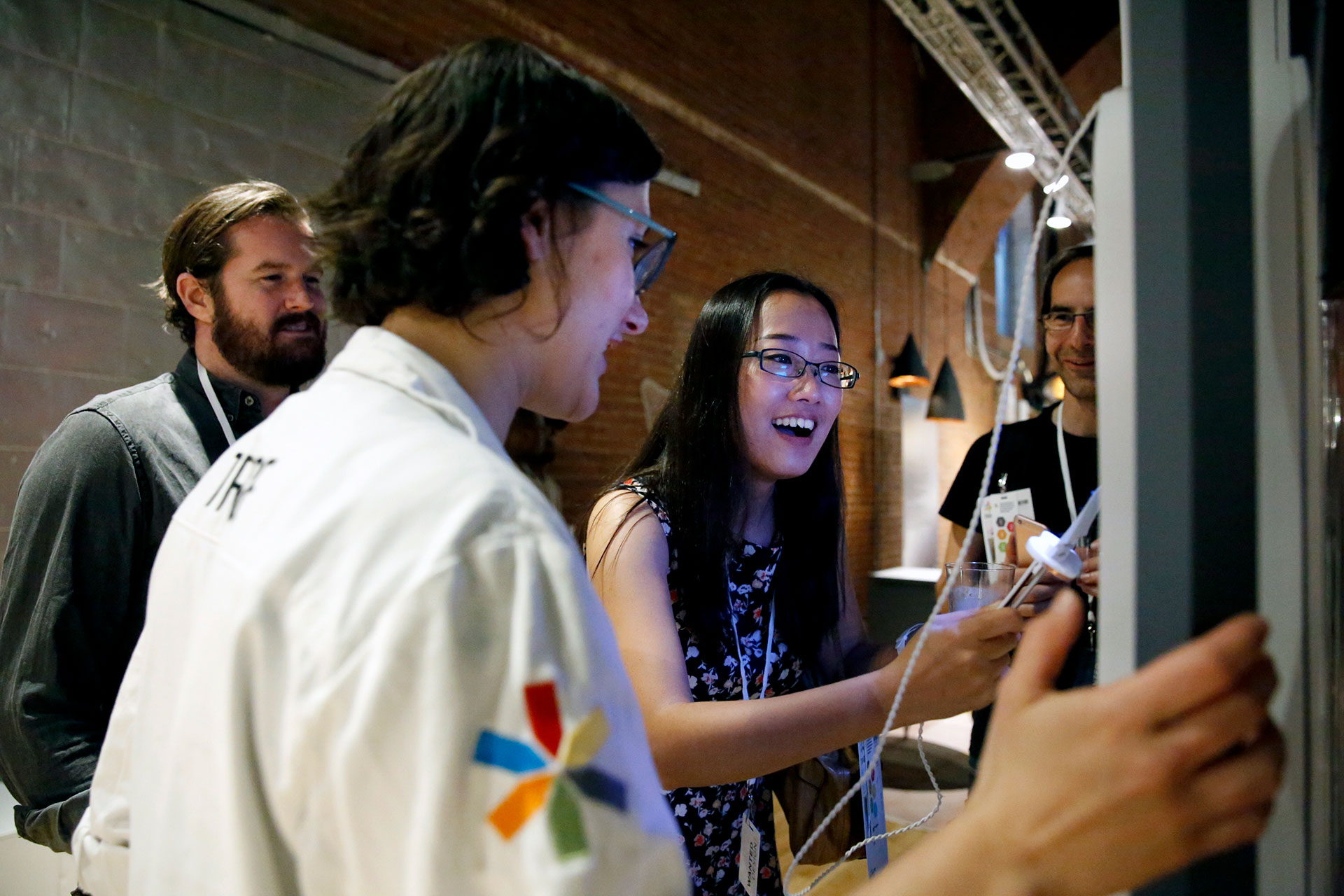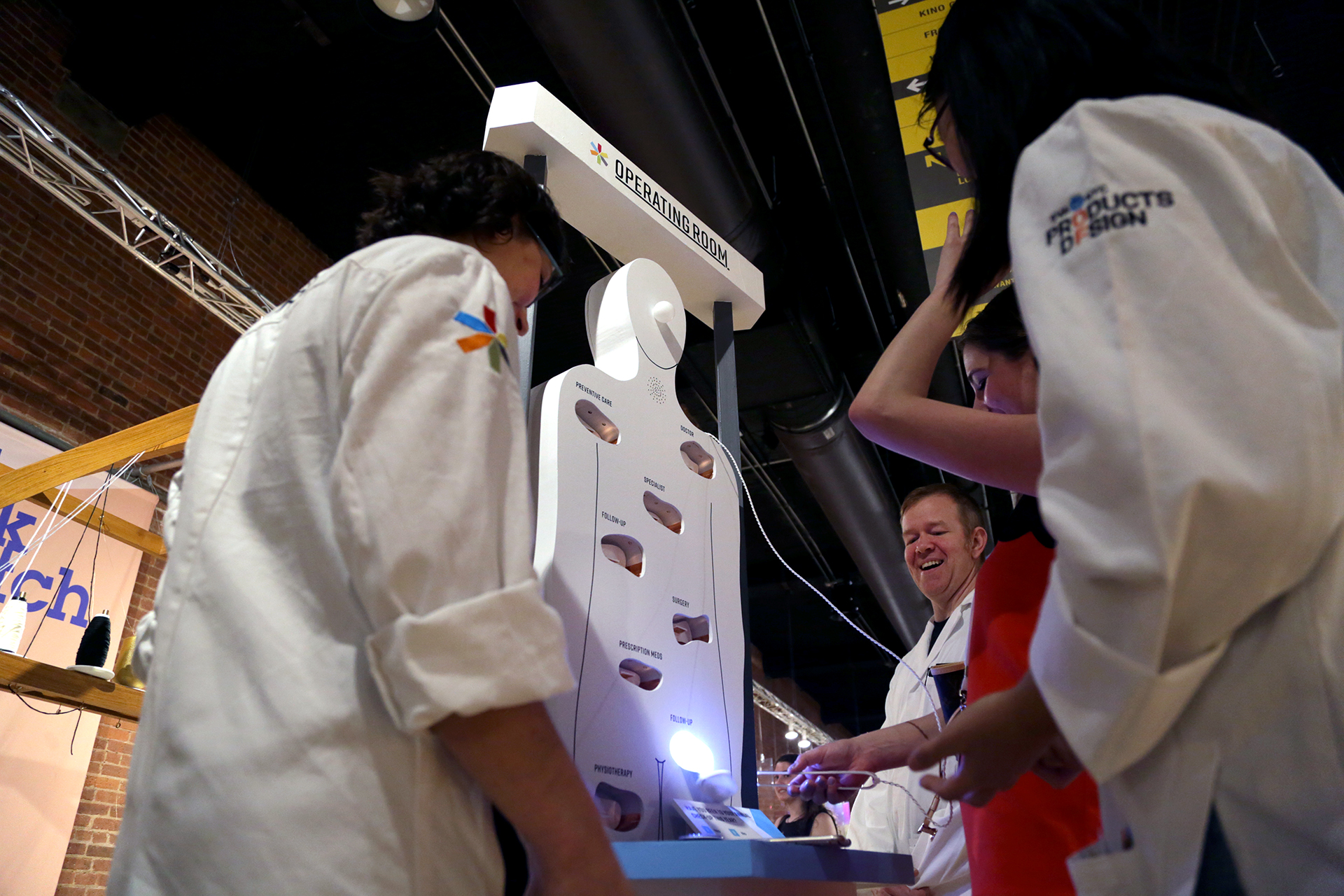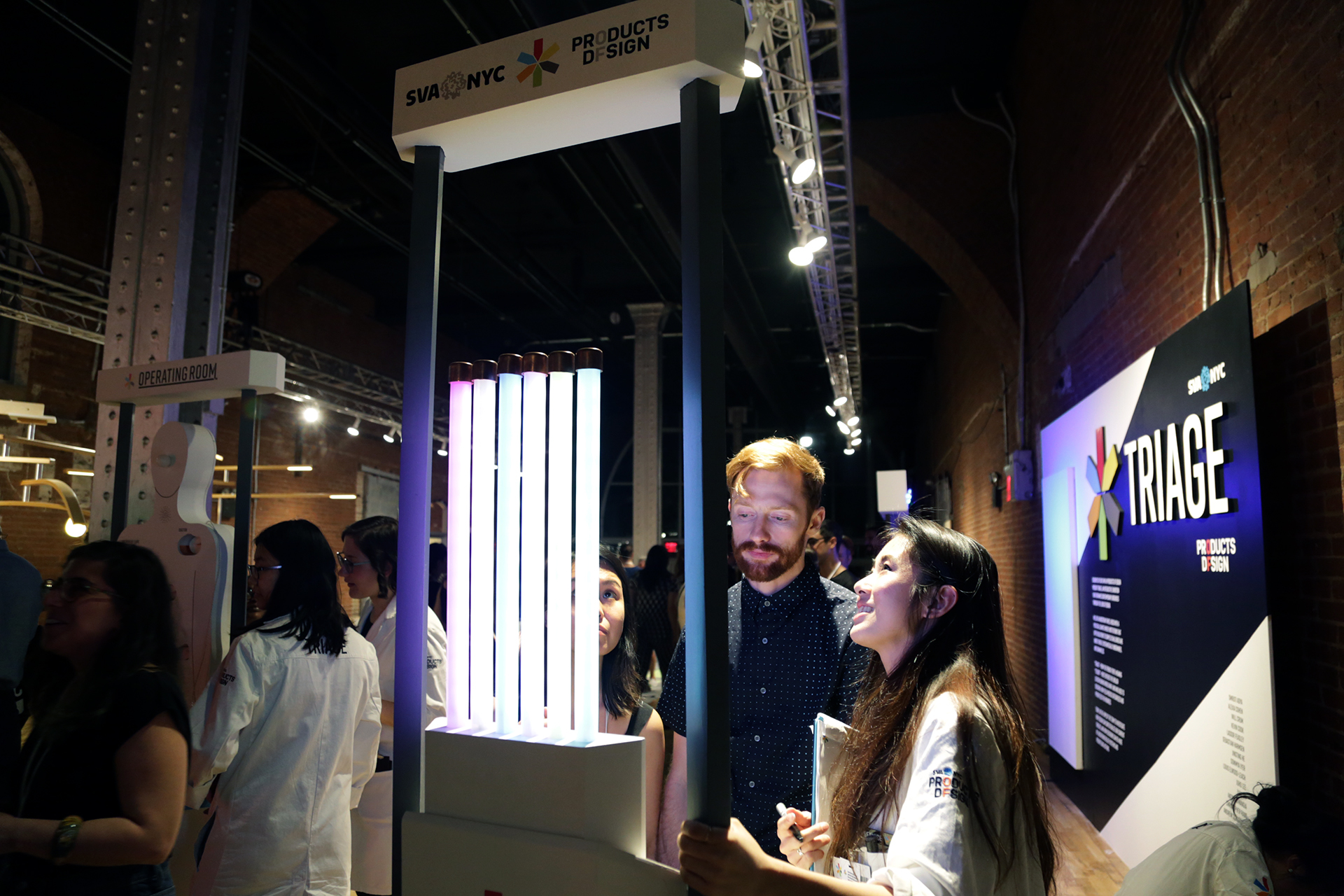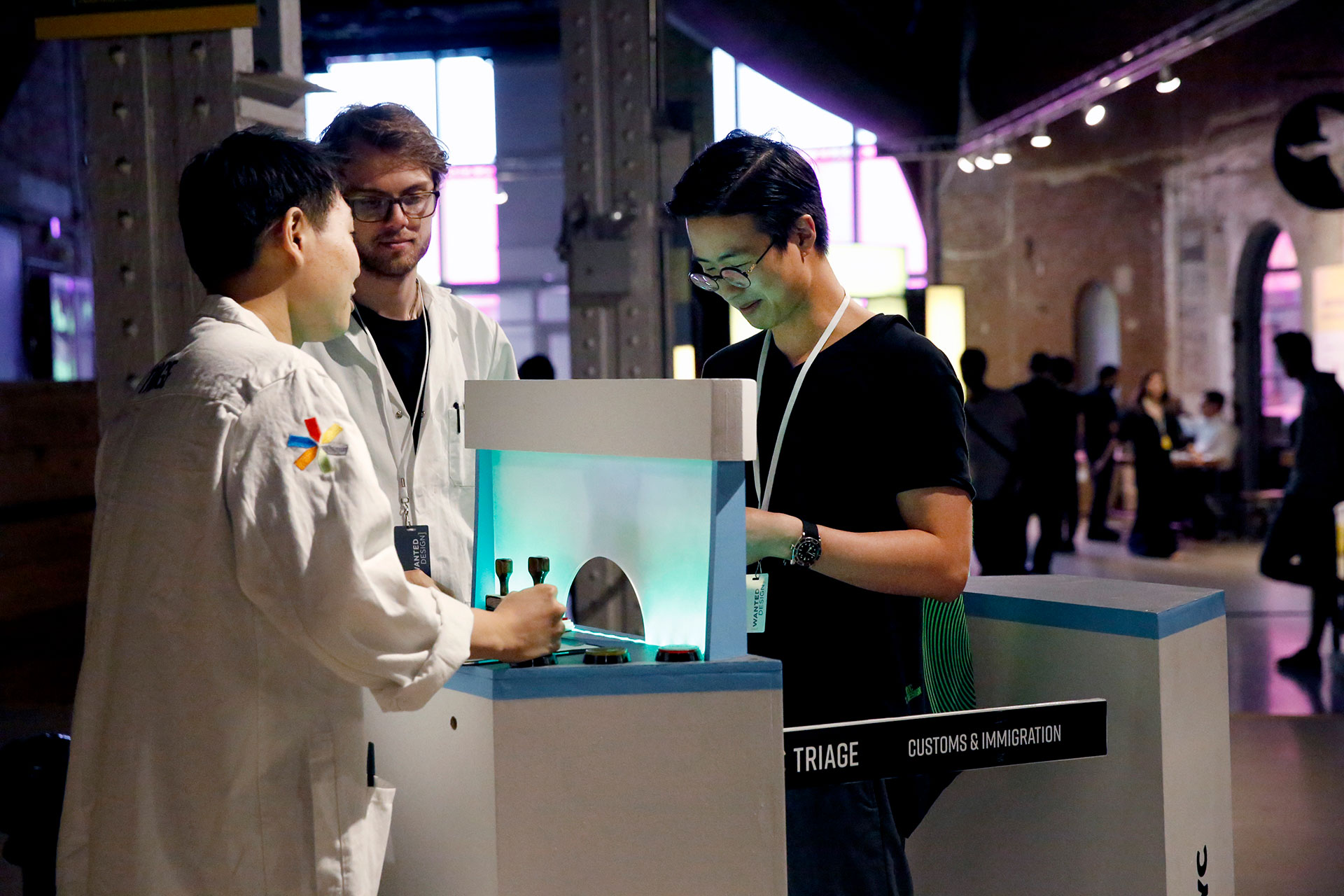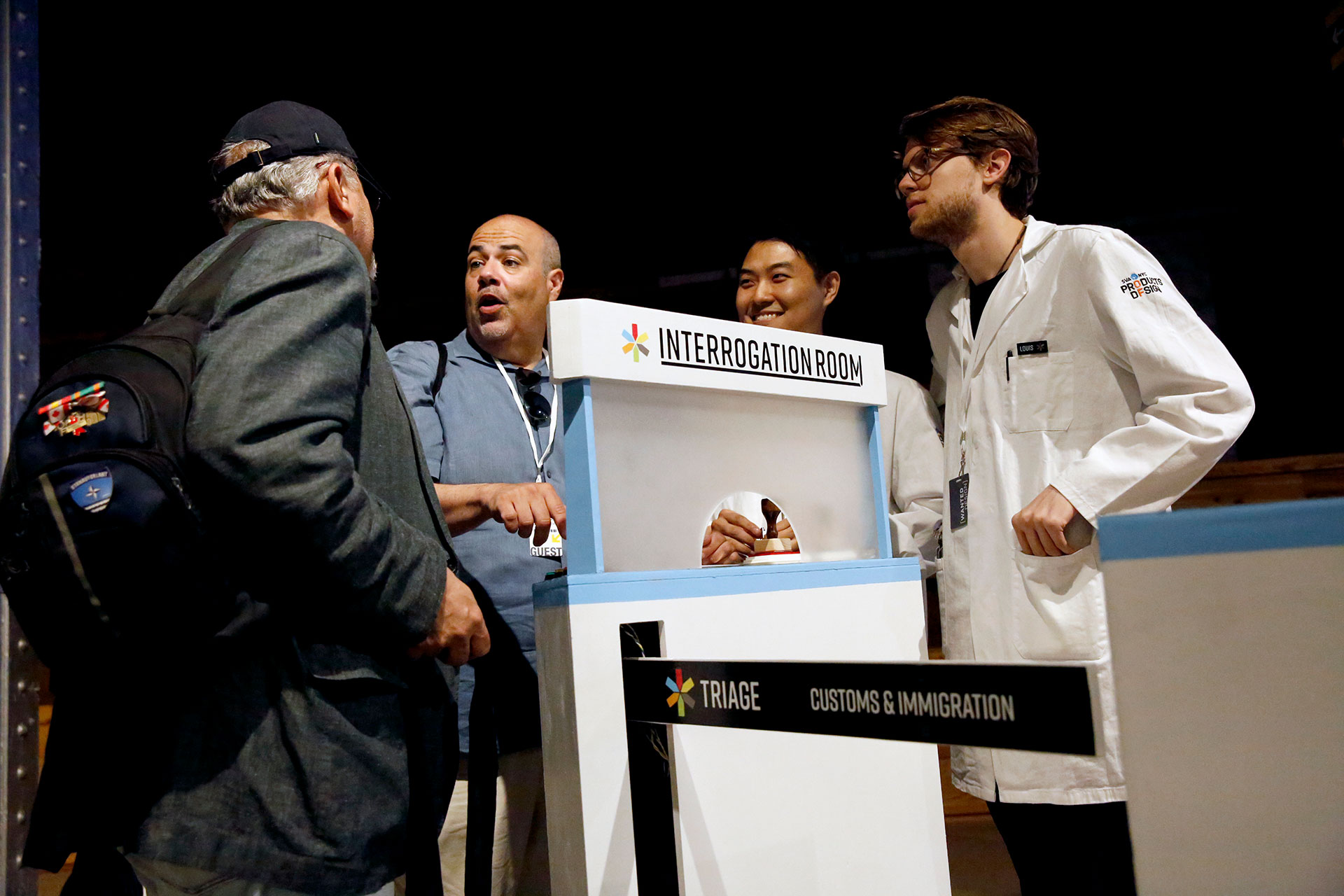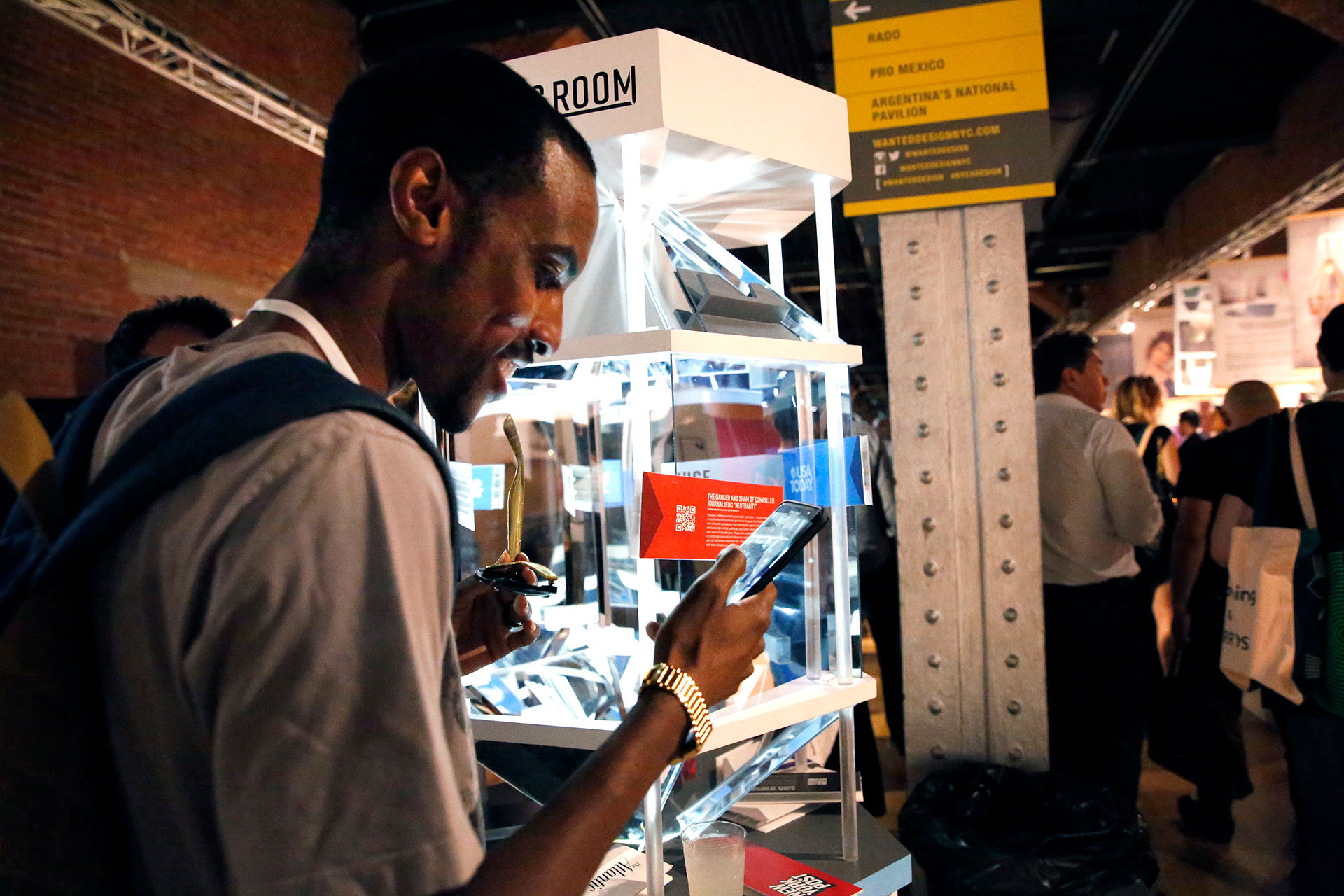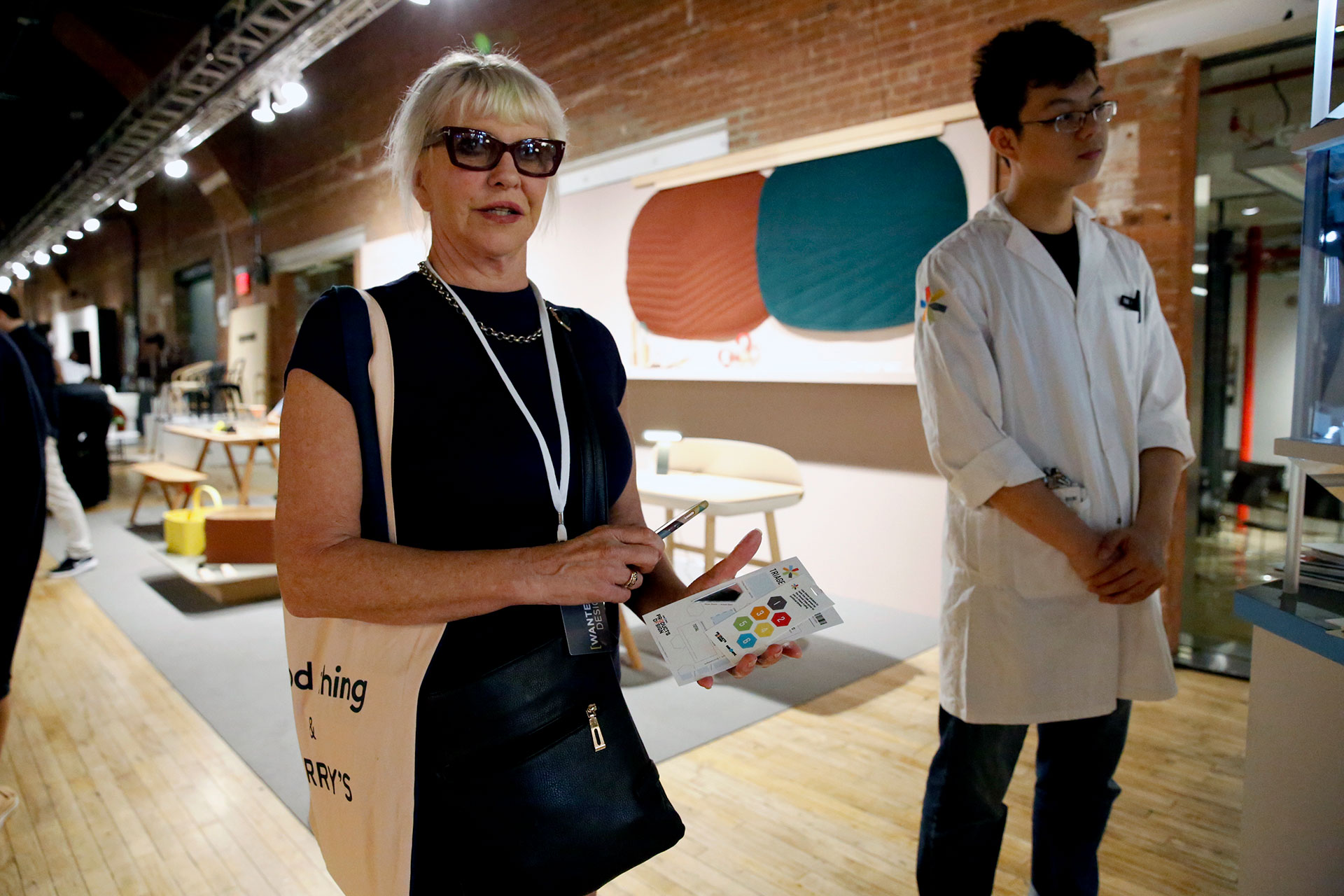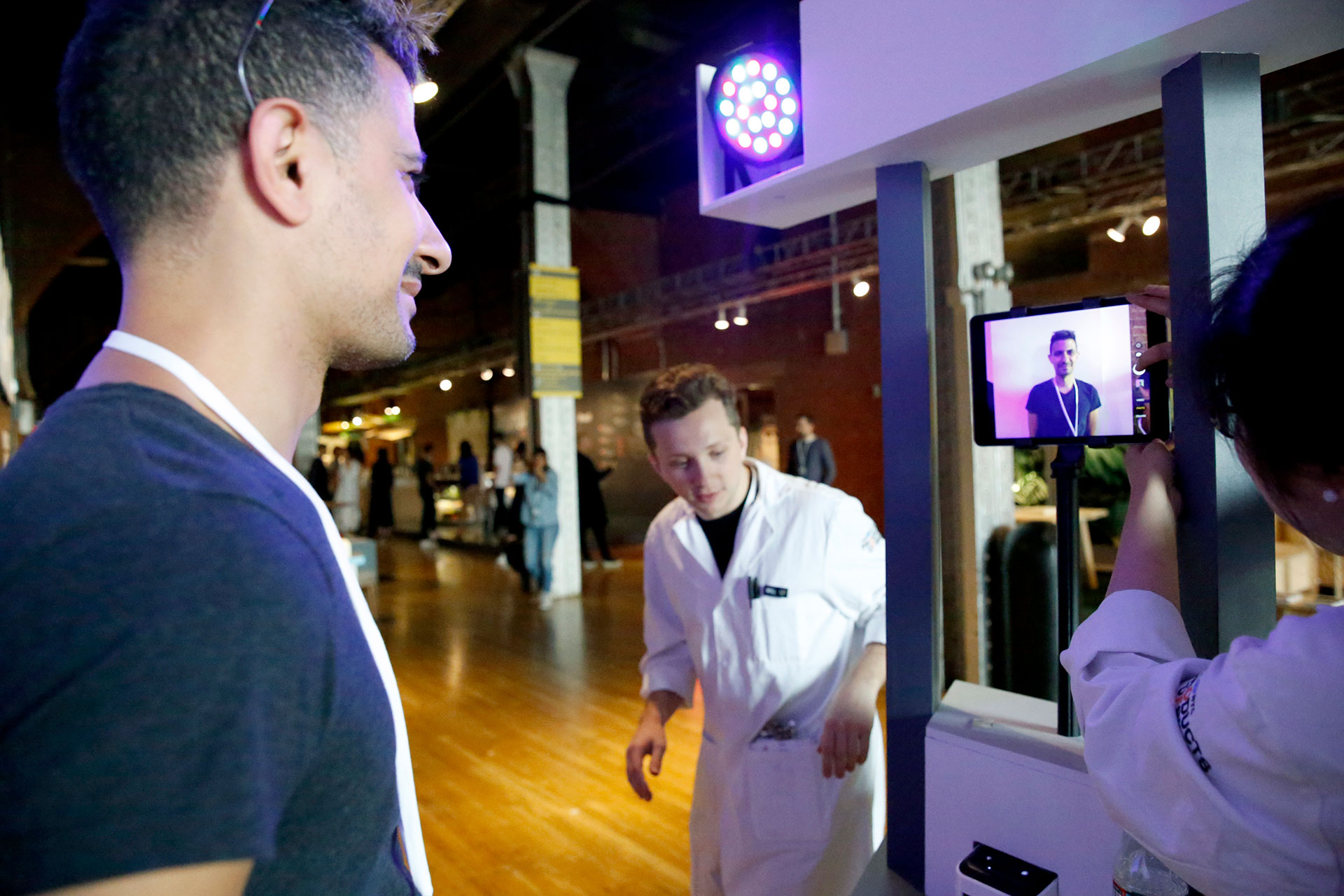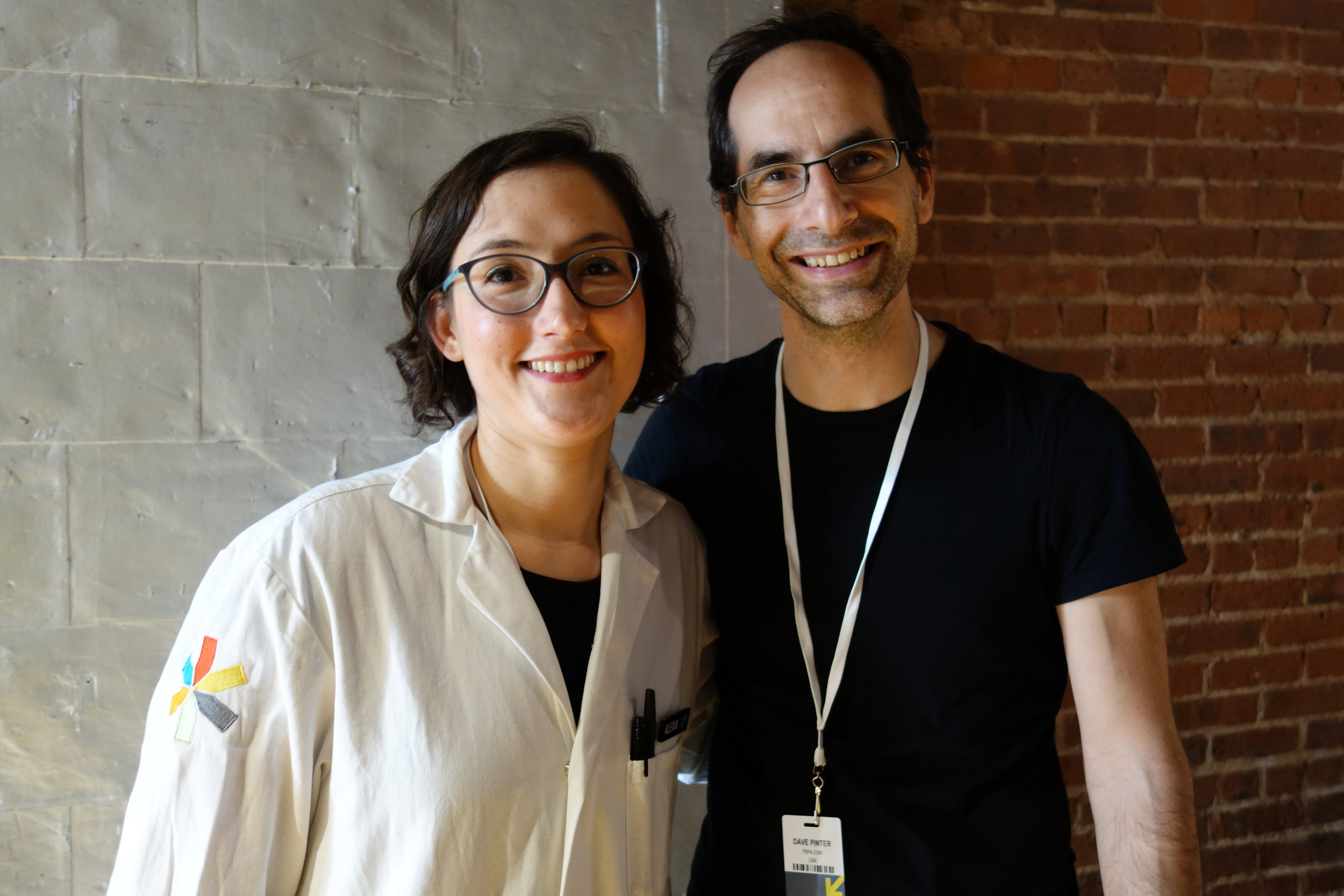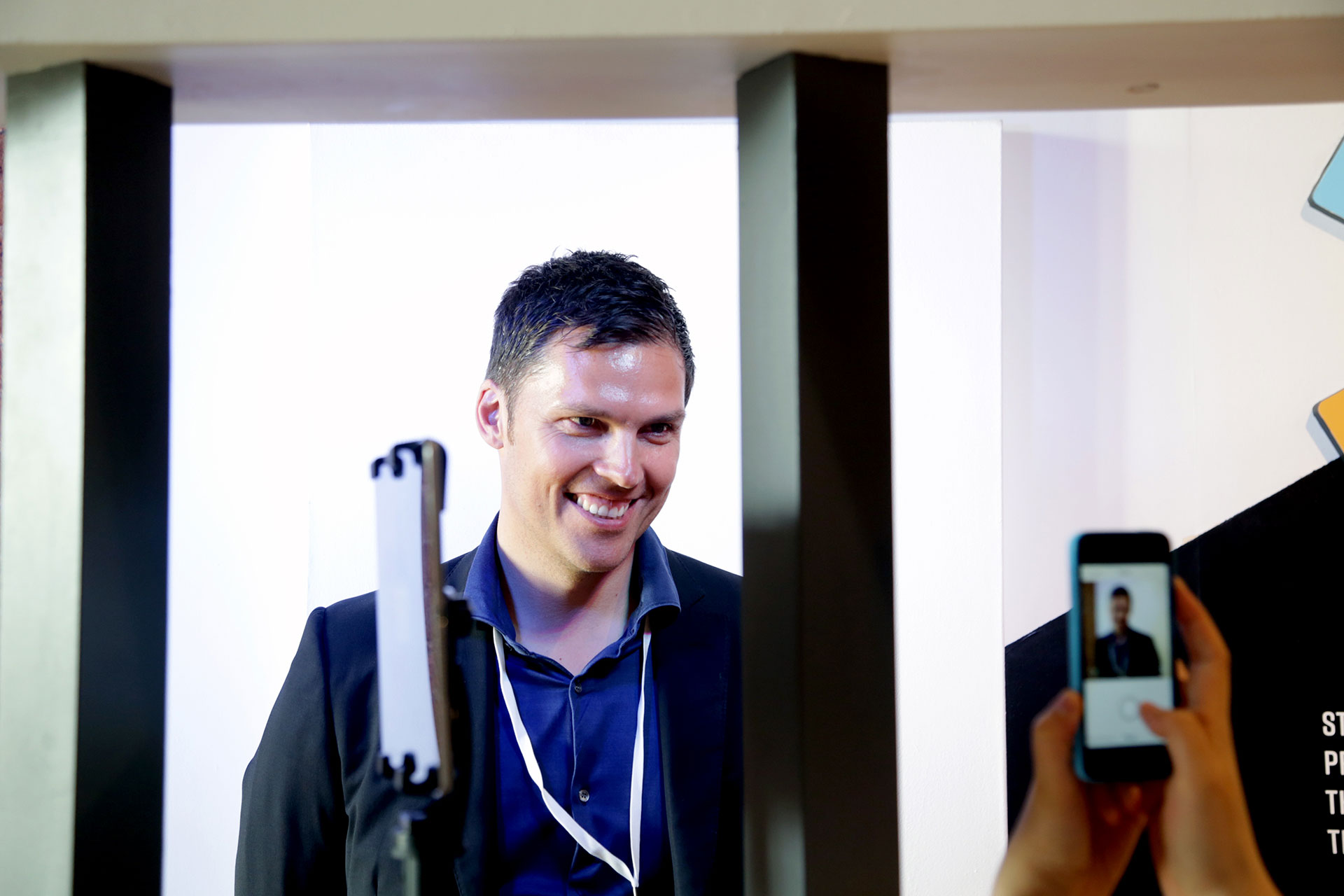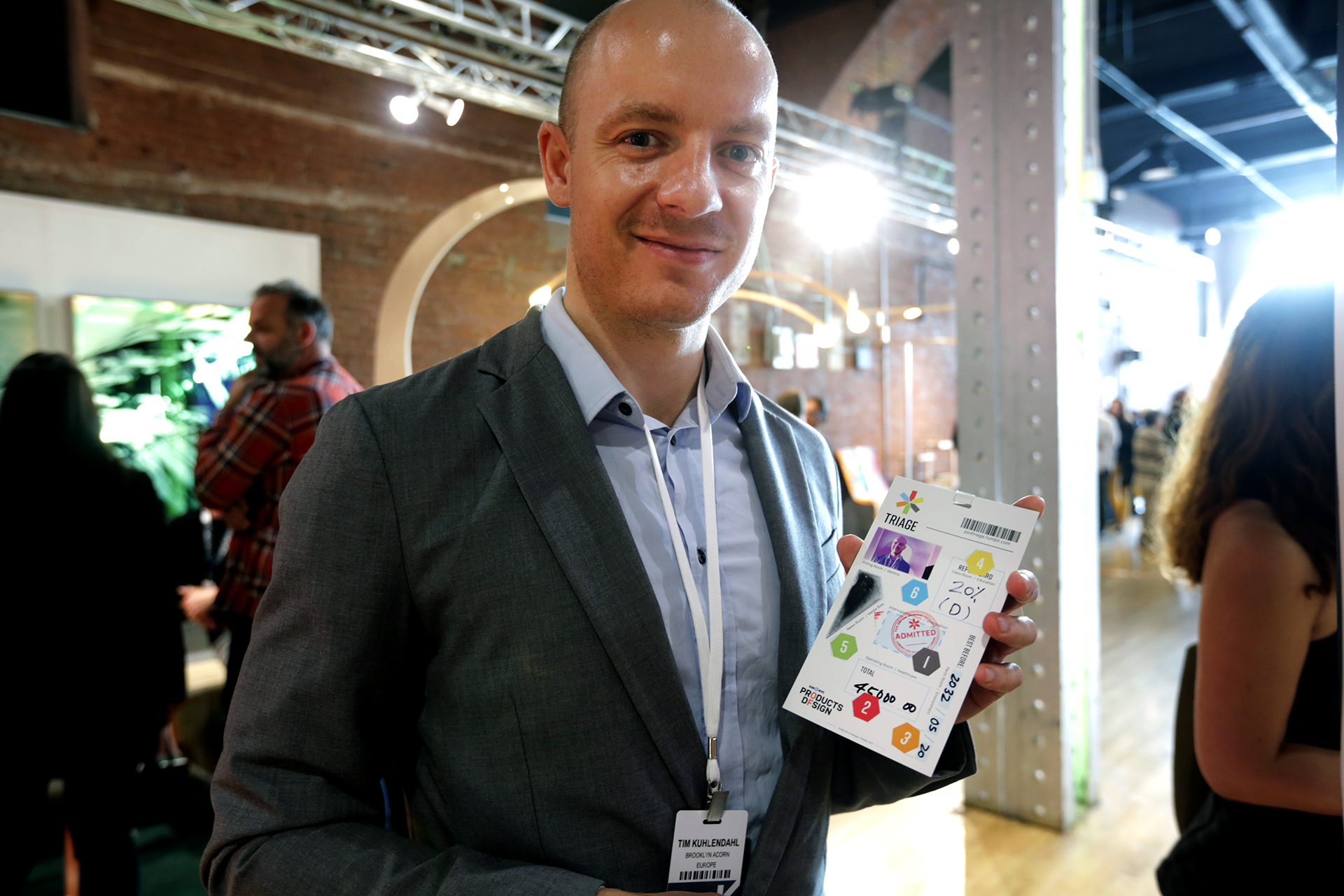TRIAGE: Launches at Wanted Design for NYCxDESIGN 2017!
Students of SVA’s MFA in Products of Design present TRIAGE, an interactive exhibition that reframes contemporary urgencies through the lens of design. The work will debut at Wanted Design Manhattan, and is part of the city-wide NYCxDesign celebration.
We live in uncertain times, faced with a political climate where institutions that offer solutions to complex challenges are under threat, systematically undermined, and dismantled. "Triage”—from the French trier, meaning “to sort”—first entered the English lexicon during World War I and was used to describe how field medics categorized and prioritized the wounded. Today, we re-employ the term to investigate how design can contextualize our current threats, and how decisions can be made by uncovering belief systems and prioritizing actions.
TRIAGE consists of six roving design interactions that assess the socio-political priorities of visitors to the design festival. At the start of the exhibition, visitors receive a TRIAGE CARD that tracks and gradually compiles their unique profile.
Operating Room
In Operating Room, participants triage the treatment choices and associated costs of the U.S. healthcare system. Using tongs to carefully extract a series of prompts embedded in a life-sized Operation game, guests make tough choices in a personal healthcare journey. Placed in the shoes of a patient in need of life saving care, Operating Room saves the participants life through the miracle of modern medicine. This gratification is soon tempered by a bill presented in the form of a receipt, which jarringly quantifies the immense costs of American health care.
Panic Room
In Panic Room, participants must contend with the Trump administration’s proposed slashing of the Environmental Protection Agency’s funding, by playing an interactive game. In this simulation, guests select which areas of environmental distress to combat, and which areas to defund. The object of the game is to save the world from ruin for as many years as possible. Panic Room doesn't shy from the inevitable; eventually the world does end, and participants must contend with their role in that fate. Guests can then compare their scores—the number of years they extended earth’s life by.
Interrogation Room
In Interrogation Room, participants explore the American immigration experience by role-playing both “foreigner” and visa officer. ‘Immigrants’ wishing to enter queue outside a ‘customs counter’, where their eligibility for passage is determined according to rules that mimic current U.S. immigration protocols. By ‘accepting’ and ‘rejecting’ participants before an audience of privileged design elites, Interrogation room brings a small taste of the frustration and despair America’s labyrinthian and arbitrary immigration system inflicts on millions.
News Room
In News Room, guests arrange a kaleidoscope of media logos inside of an immersive hall of mirrors. This represents their literal ‘media echo chamber’—a physical manifestation of the way their media habits form their thoughts, perspectives, and opinions. As they create their echo chamber, they are confronted with journalistic criticism of their favorite news organizations, calling into question the values, motives, perspective, and agenda of the sources they trust. Placing their phone atop the installation, they emerge with a new kind of selfie to post on social media.
Class Room
In Class Room, visitors are asked to triage the U.S. education system by prioritizing six budget areas—facility, peer environment, safety, accessibility, pedagogy, and educators. Based on the education priorities they select, Class Room transforms into a ‘distraction desk' where the participant must answer a pop-quiz while literally tormented by their choices. Each distraction represents disadvantages students are likely to face in the educational environment the participant created.
Fitting Room
In Fitting Room, visitors triage the risks around their own identities—indicating how threatened by external factors they feel by various aspects of their personal identification. These include factors such as their body, class, race, faith, and gender. As the participant keys in their identity to Fitting Room, an illuminated stage comes to life before them; bright colors representing their identity flood the room. Once the triage is completed, participants receive an instant thermal photograph of themselves—bathed in their own identity.
Triage Card
The seventh interaction is a guided experience on the TRIAGE card itself, where physical souvenirs from each of the interventions come together in a way that ranks their newly-revealed priorities—sorted from most pressing to least. Visitors leave the exhibition with newly-discovered points of view, uncovered biases, and heightened enthusiasm.





















